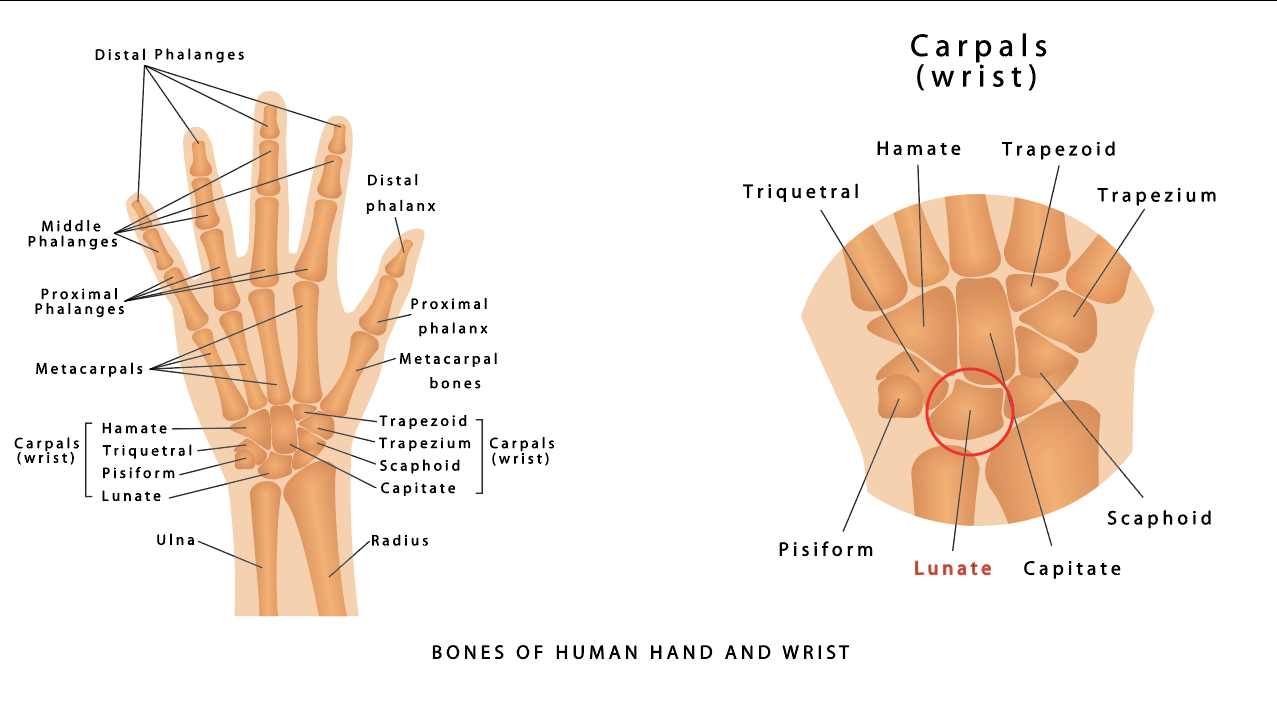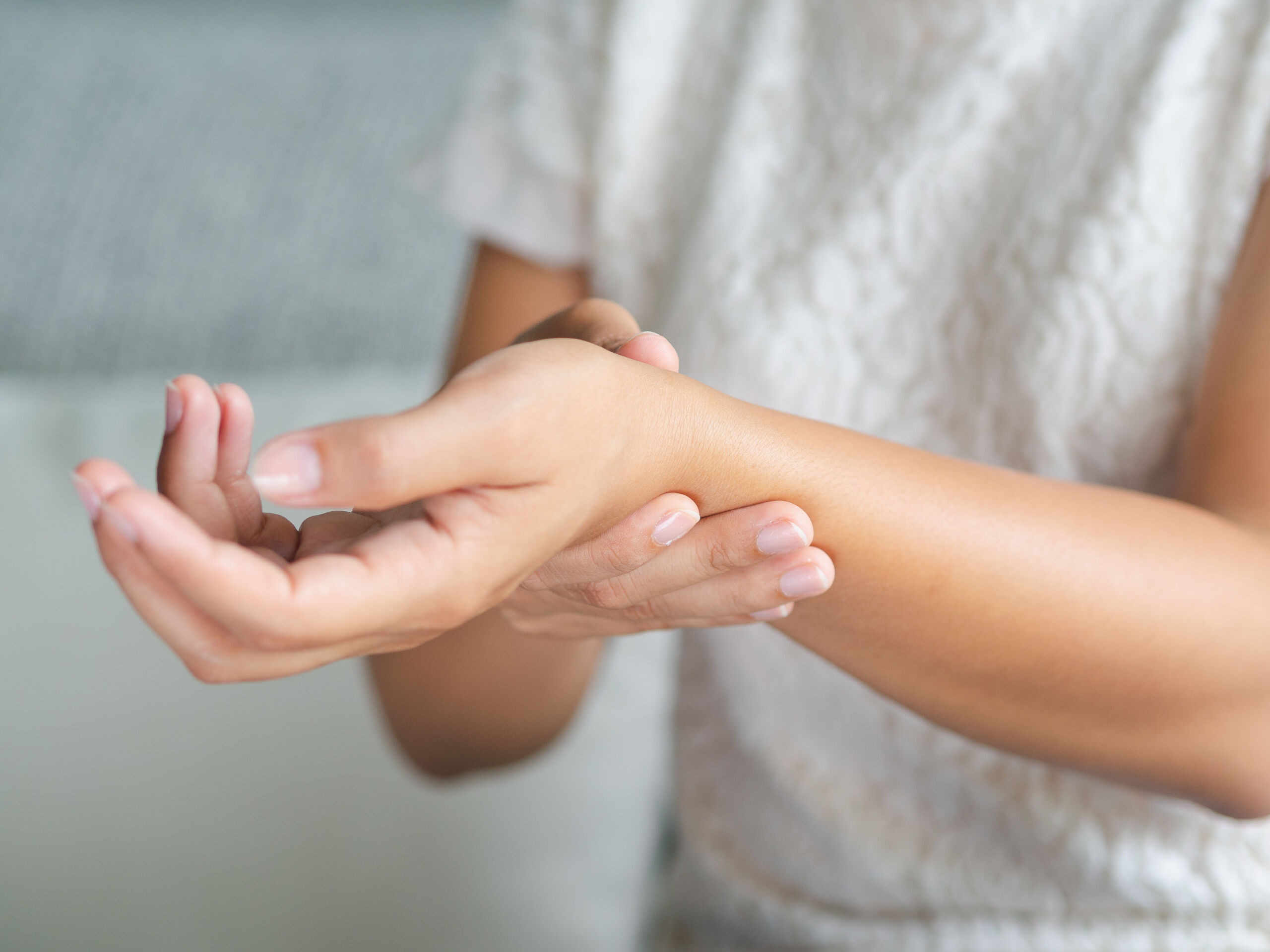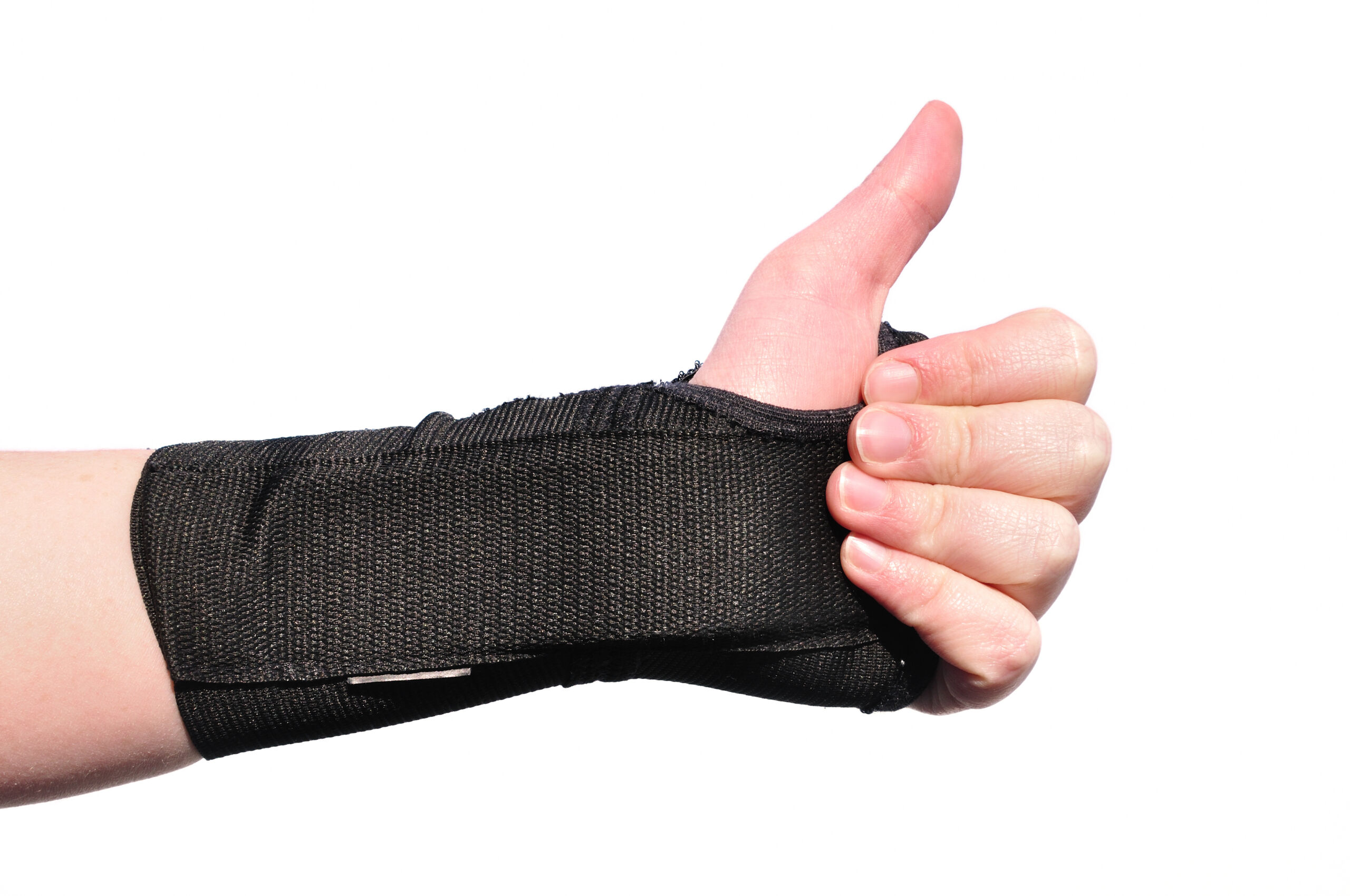Northern California Kienbock’s Disease Treatment
Kienbock’s Disease in the Greater San Francisco Bay Area
Kienbock’s disease, also known as avascular necrosis of the lunate, occurs when the blood supply to one of the small bones in the wrist, called the lunate, is disrupted. The lunate is a crucial bone that helps with wrist movement and stability.
Anatomy
The wrist, also known as the carpus, is a complex joint that connects the forearm to the hand. It is composed of eight small bones arranged in two rows, known as the carpal bones. These bones work together to provide flexibility and stability to the wrist joint, allowing for a wide range of movements.

There are two rows of carpal bones, and there are four bones in each row:
- Proximal Row: Closer to the forearm
- Scaphoid (navicular)
- Lunate
- Triquetrum
- Pisiform
- Distal Row: Closer to the hand
-
- Trapezium
- Trapezoid
- Capitate
- Hamate
The lunate bone, one of the most critical carpal bones, located in the middle of the proximal row between the scaphoid and triquetrum bones. It plays a crucial role in wrist movements and acts as a bridge between the two rows of carpal bones, allowing for smooth interactions between the bones during motion. Its unique shape and position make it susceptible to injury, particularly when there is a disruption in its blood supply.
The blood supply to the lunate comes from small branches of the radial artery, a major artery that supplies blood to the forearm and hand. In some cases, the blood flow to the lunate can become compromised, leading to avascular necrosis (cell death due to lack of blood flow) of the bone. This condition is known as Kienbock’s disease.
Cause
The exact cause of Kienbock’s disease is not always clear, but it is believed to result from a combination of factors, including repetitive wrist stress, trauma to the wrist, and certain anatomical variations in the wrist bones. It typically affects young adults, particularly those engaged in activities that involve repetitive wrist motions or direct trauma to the wrist area.

Symptoms
The main symptoms of Kienbock’s disease include pain, swelling, and stiffness in the wrist. As the condition progresses, you may experience a limited range of motion and weakness in the affected wrist. The pain may worsen with activity and can become chronic if left untreated.
Non-Surgical Treatments

In the early stages of Kienbock’s disease, non-surgical treatments are usually attempted to relieve symptoms and slow down the progression of the condition. These treatments may include:
- Rest and Immobilization: Giving the wrist adequate rest and using a splint or brace to immobilize the wrist can help reduce stress on the affected bone.
- Pain Management: Over-the-counter pain relievers like ibuprofen or acetaminophen can help manage pain and inflammation.
- Physical Therapy: A physical therapist can guide you through exercises to maintain wrist flexibility and strength.
- Corticosteroid Injections: Injecting corticosteroids into the wrist may help alleviate pain and inflammation in some cases.
Surgical Treatments
If the disease progresses or non-surgical treatments do not provide sufficient relief, surgical options may be considered. The choice of surgery depends on the stage and severity of the disease. Some common surgical procedures for Kienbock’s disease are:
- Revascularization: This procedure aims to restore blood flow to the lunate bone by rerouting nearby blood vessels. It is typically recommended for early-stage disease.
- Joint Leveling: In this procedure, the surgeon alters the length of one or more bones in the forearm to redistribute forces on the wrist joint and alleviate pressure on the lunate bone.
- Partial or Total Joint Fusion: If the lunate has already collapsed or if the condition is advanced, the surgeon may perform a partial or total fusion of the wrist bones to stabilize the joint.
- Core Radial Decompression Procedure: Generally more effective in the early stages of the disease, core radial decompression is aimed at stimulating blood flow to the lunate bone and relieving pressure on the affected area.
(Sources: The Journal of the American Academy of Orthopaedic Surgeons, “Kienbock Disease” – June 2017; Mayo Clinic, “Kienbock’s Disease”)
(Sources: StatPearls, “Anatomy, Shoulder and Upper Limb, Wrist” – February 2021; Wheeless’ Textbook of Orthopaedics, “Lunate” – Last updated in March 2021)(Source: Wheeless’ Textbook of Orthopaedics, “Kienbock’s Disease Treatment & Management,” last updated in March 2021)
(Source: Wheeless’ Textbook of Orthopaedics, “Kienbock’s Disease Treatment & Management,” last updated in March 2021)
